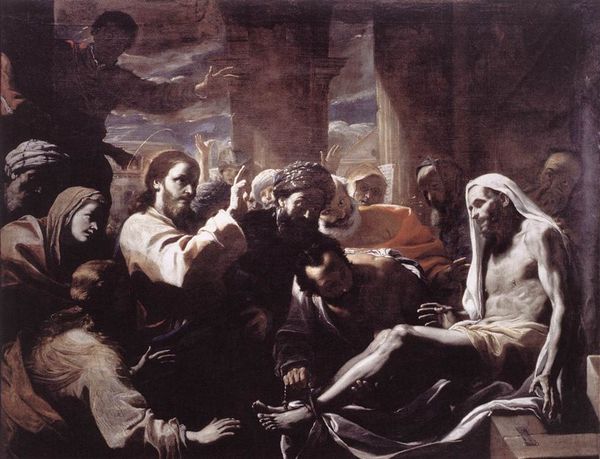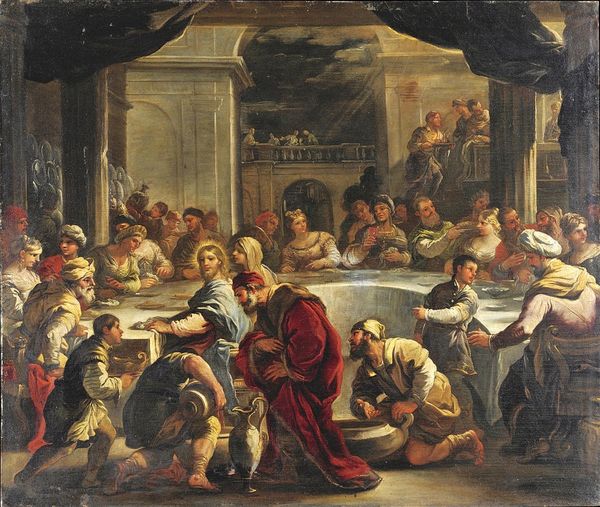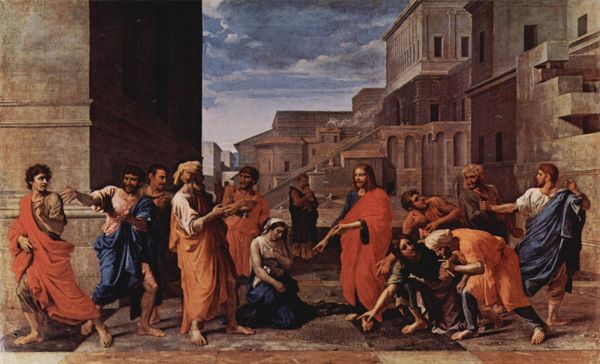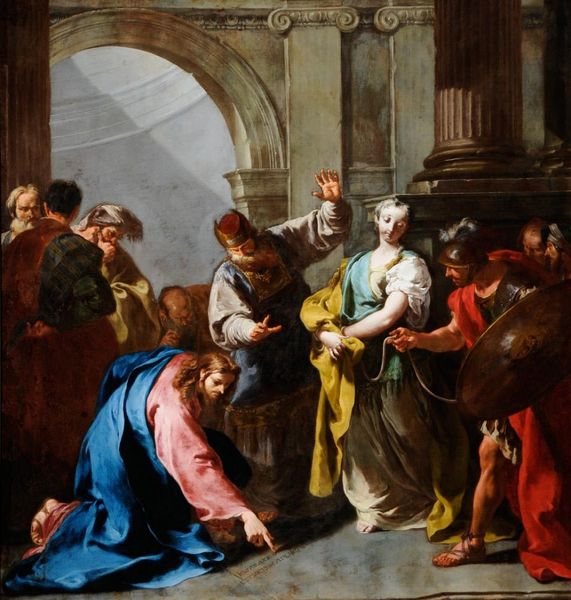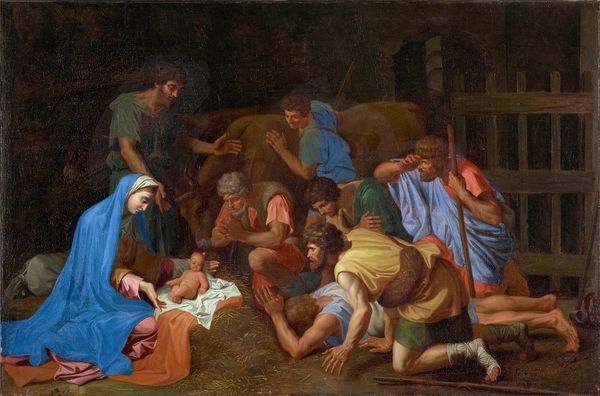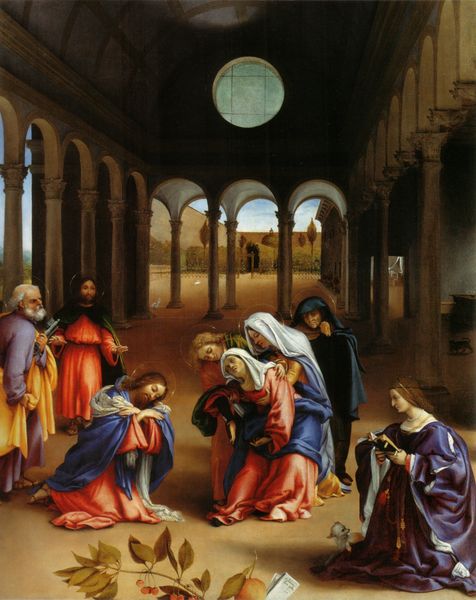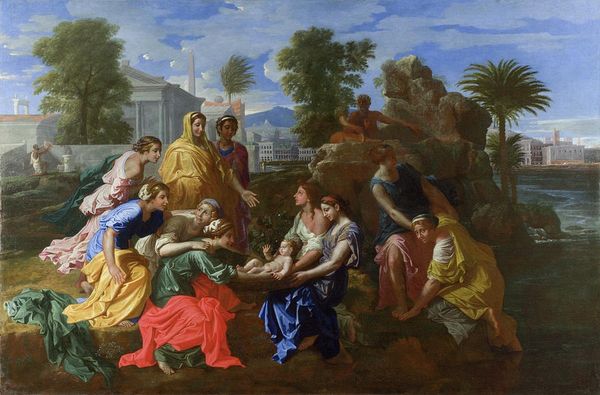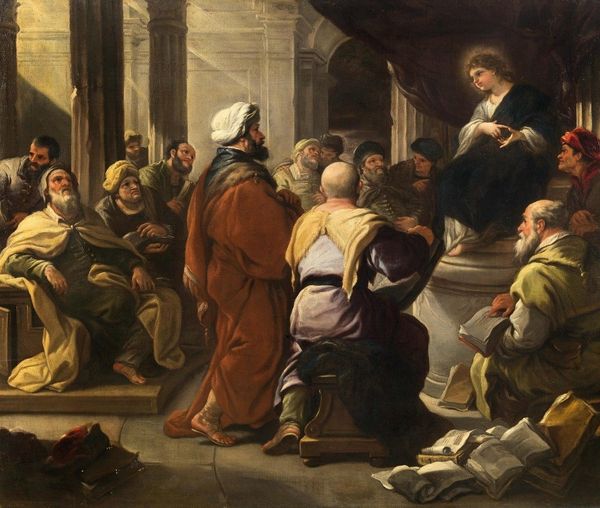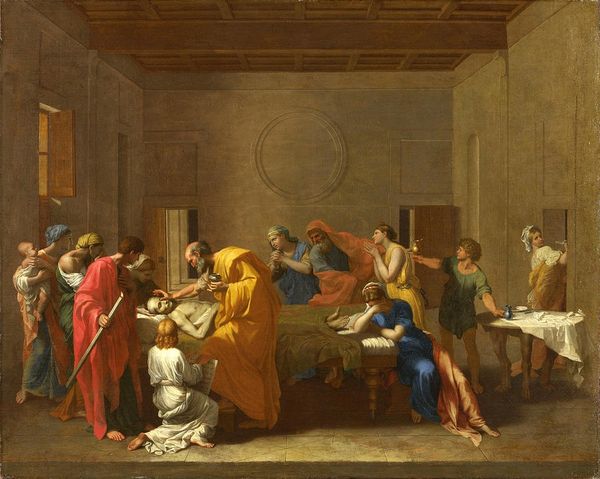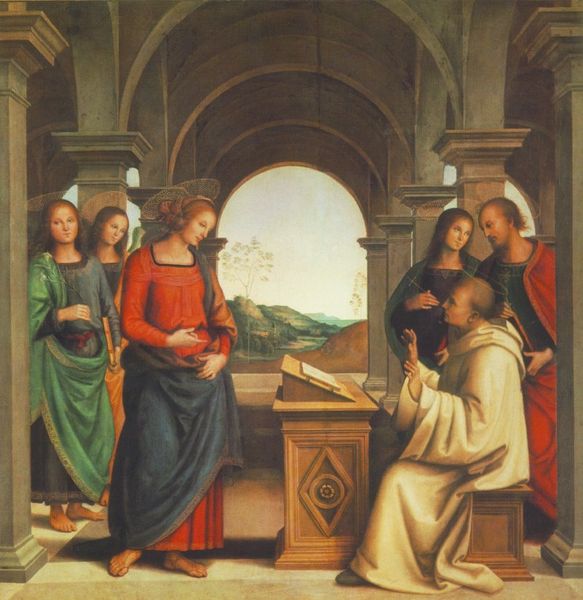
tempera, painting, oil-paint
#
portrait
#
narrative-art
#
tempera
#
painting
#
oil-paint
#
figuration
#
oil painting
#
christianity
#
painting painterly
#
history-painting
#
italian-renaissance
Copyright: Public domain
Curator: Perugino's "Pala di Fano," also known as the "Nativity of Mary," painted around 1497... it's breathtaking. So serene. What are your initial thoughts? Editor: Well, that subdued palette, those arched windows framing a dreamy landscape... it feels almost staged, like a beautiful dream happening just out of reach. It’s giving me that pre-Raphaelite melancholy. Curator: Melancholy is an interesting word choice. This scene depicts the birth of the Virgin Mary, a moment of immense hope and religious significance. The classical architecture surrounding the figures, especially the arches, is intentional, pointing back to ancient Roman ideals, connecting the nascent Christian world to the old. Editor: Absolutely. But even in its serenity, I can't shake this sense of restrained emotion. Is it the muted colors, perhaps? Like happiness diluted with foreknowledge? Or is it the symmetry lending too much formalism to such an intimate moment? The baby Mary isn't exactly beaming. Curator: Perhaps it's a visual reminder of the somber path destined for the holy figure. Note how each woman performs a precise function, frozen in a moment that suggests solemn tradition. The arches themselves suggest continuity. Consider the woman carrying a large vessel on her head – an archetype rooted in early antiquity, connecting ideas of burden, nourishment, and cyclical time. Editor: It's like time-traveling, almost! I keep thinking of those Roman murals in Pompeii mixed with...oh, I don’t know... a memory of watching a sunrise. Curator: Exactly! The classical and sacred become one. Look how the arrangement also guides your eyes toward the bed chamber on the right—birth represented in an architecturally imposing stage. Editor: I suppose there’s something to be said for framing our own small, everyday events inside those mythic structures and narratives…Maybe the melancholy comes from seeing your messy human life placed within that perfect Renaissance order. Thanks, it's really fascinating. Curator: An insightful reflection, indeed. An image worth revisiting through different lenses.
Comments
No comments
Be the first to comment and join the conversation on the ultimate creative platform.
